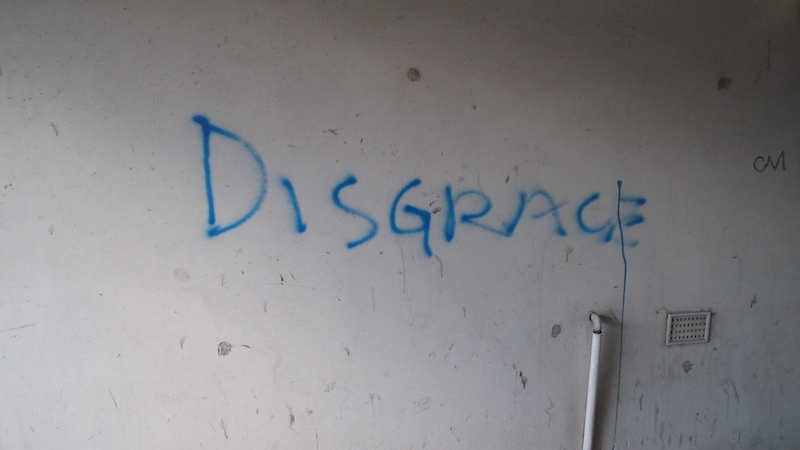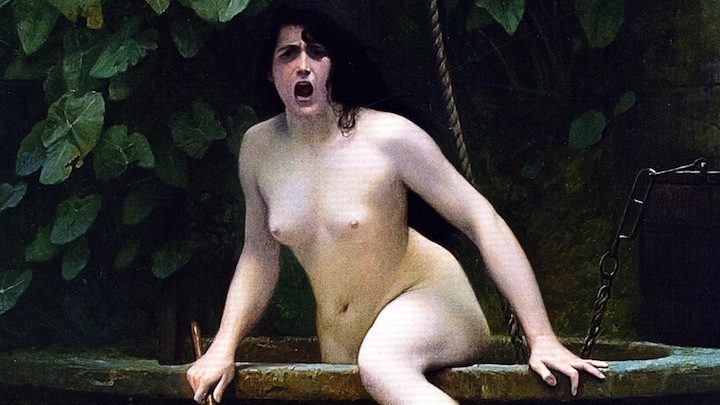Disgrace – the deepest form of shame
- 1 November 2023
- Posted by: Michael H Hallett
- Category: Shame ,

For many years I’ve been excavating the unconscious—the place where, as Laura Knight-Jadczyk writes, “are found unfathomable depths of the rejected, the unacknowledged, the unrecognised, the unknown and undeveloped elements of our existence.”
Through consistent application of the principles of emotional mechanics, the unfathomable can be fathomed, the unrecognised recognised, and the unknown known.
I’ve recently encountered a contour line on the map of the unconscious that I wasn’t expecting—the place where shame turns to disgrace.
What is disgrace?
The medieval word ‘disgrace’ comes from the Italian disgrazia, dis- (expressing reversal) joined to the Latin gratia, ‘grace’. The Merriam-Webster dictionary defines it as follows:
1 a : the condition of one fallen from grace : the condition of one who has lost honour (left in disgrace)
b : loss of grace, favour, or honour (brought disgrace upon the family)
2 : a source of shame (Your manners are a disgrace. He’s a disgrace to the profession.)
This is a place of permanent and irredeemable shame. Where grace, however we conceive that, is no longer our birth right—and cannot ever be again.
Think of politicians, sports stars, actors, and other public figures that have fallen into disgrace. Harvey Weinstein. Jimmy Savile. Rolf Harris. The way back is closed.
Disgrace and shame are often listed as synonymous and, therefore, interchangeable.
From the perspective of deep emotional clearing work, that doesn’t seem to be accurate. I encountered a boundary between the two. I crossed, from shame (which I could bear) into disgrace (which I could not). I went beyond the pale.
Beyond the pale
‘Beyond the pale’ is an interesting figure of English speech that gives some indications as to the difference between shame and disgrace.
The phrase reputedly originates from the 12th century Norman invasion of Ireland when the mutinous Irish encircled their invaders in a palisade around Dublin. Palisade derives from the word ‘pale’, meaning a fencepost (as in ‘to impale’), itself from the Latin pālus, ‘stake’.
To leave the palisade was to enter a place of not just mortal danger but, more darkly, one of unredeemable spiritual degeneracy as well.
I had the sense that my disgrace was ring-fenced, the part of me so abhorrent that it had to quarantine itself in the depths of my unconscious to avoid detection.
Disgrace is self-effacing, like the wall in the photograph above. It draws our lives in ever-decreasing circles, away from connection and community. We find ourselves further and further from the surface of life, staring up like a prisoner in a dungeon at a pinprick of light far above.
Truth emerges from the well
I have long been drawn to Jean-Léon Gérôme’s 1896 painting Truth emerges from the well to shame mankind.

It was the last of four paintings Gérôme made of this subject, inspired (according to Wikipedia) by a translation from the Greek philosopher Democritus: “Of truth we know nothing, for truth is in a well.”
When we embark on a healing journey, Truth emerges from the well of our own unconscious and shames us for rejecting it.
Disgrace, the sludge at the bottom of the well of shame, is where our deepest personal truths are found.
Photo: Disgrace by Paul Robertson on Flickr (CC BY-ND 2.0, cropped to 16×9)
